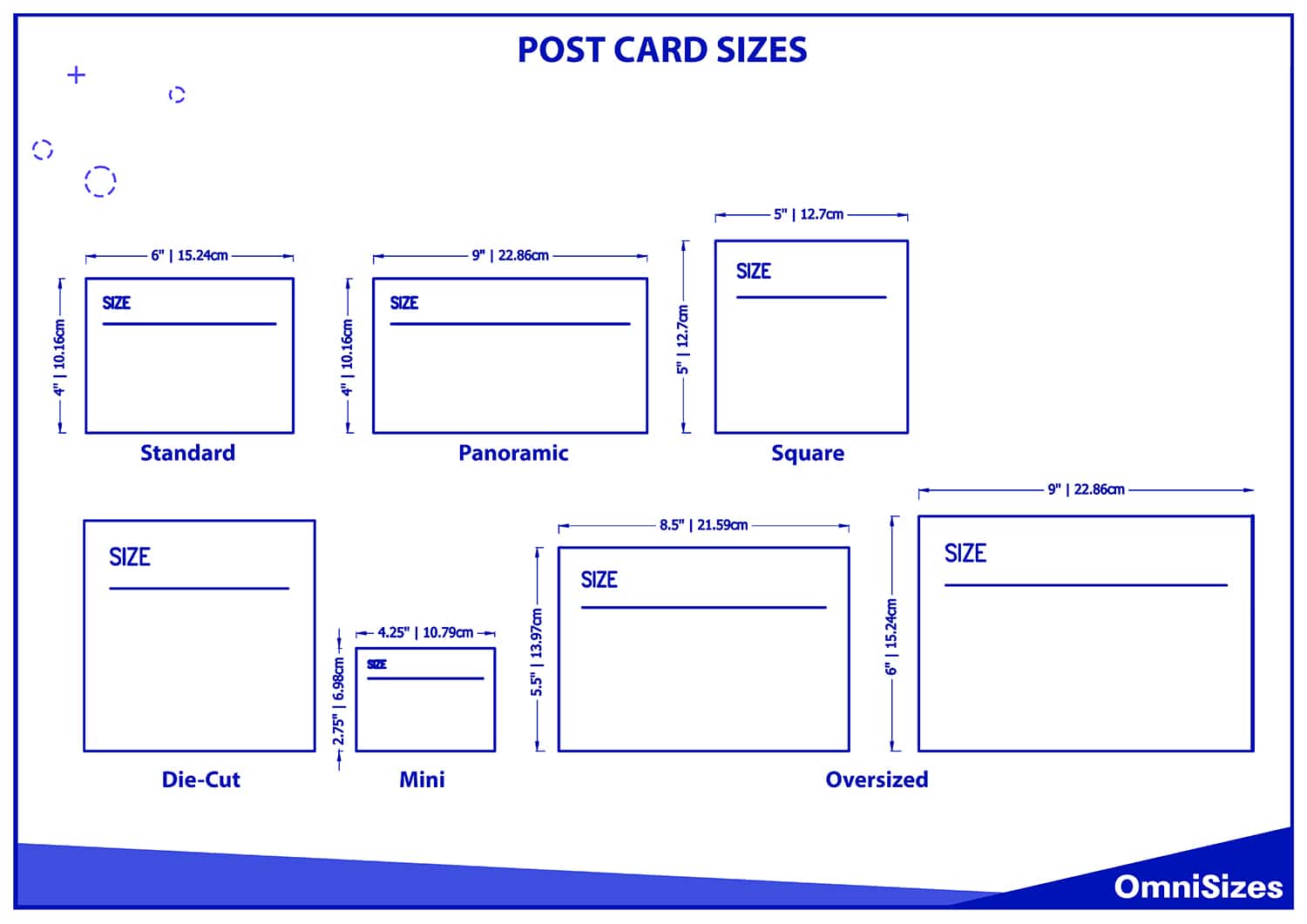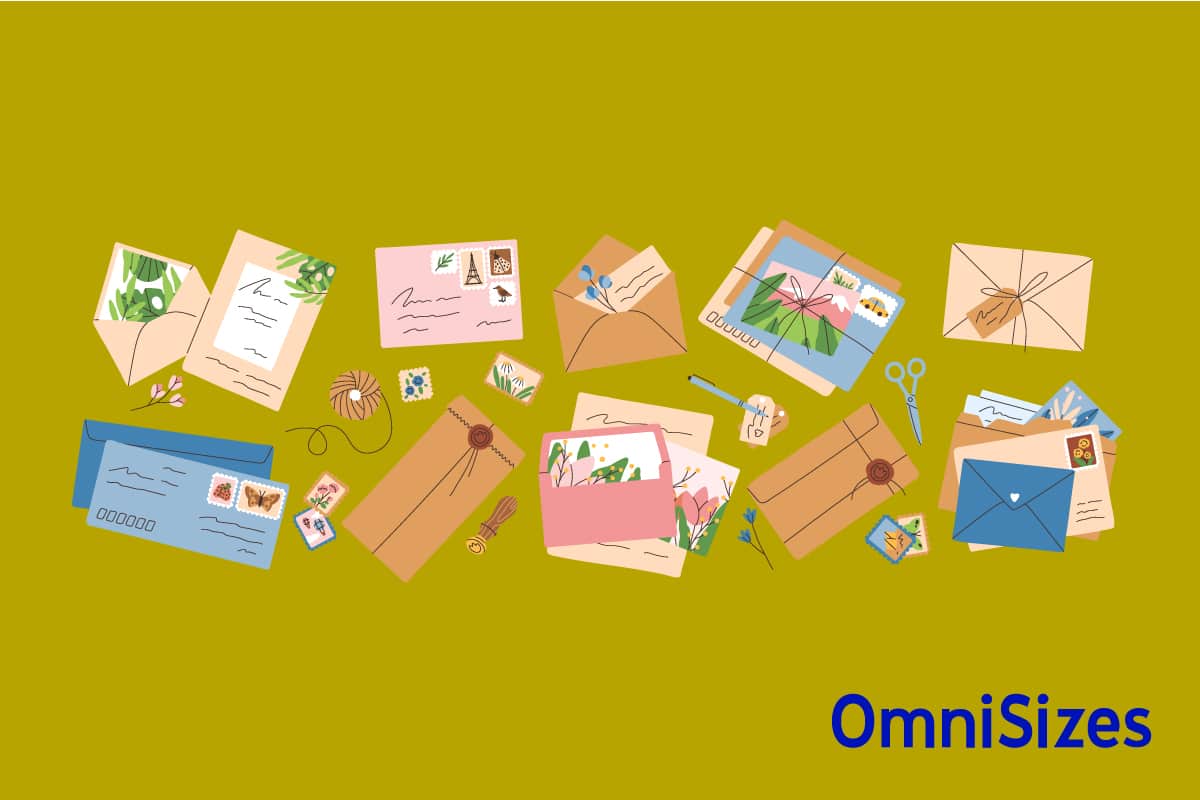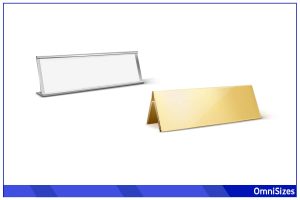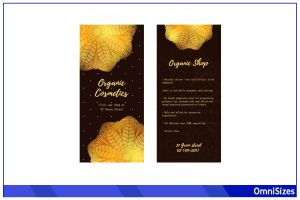Postcard sizes have been a huge part of mail communication for decades. These rectangular pieces of card stock have not only been vessels of messages and images but also indicators of changing design and communication standards.
Standard postcard size typically measures 4 × 6 inches or about 10.16 × 15.24 centimeters. However, there are several other size variants ranging from smaller sizes like 3.5 × 5 inches to larger formats such as 5 × 7 inches or 12.7 × 17.78 centimeters.

This guide will cover various postcard dimensions, from standard to specialty sizes, and tips for designing your own postcards.
Standard Postcard Sizes Around the World
Postcards have been a favorite medium for sending messages, photos, and greetings for over a century. As they traveled across continents and countries, their sizes adapted to local postal regulations.
1. North American Standard Sizes
In North America, particularly the United States and Canada, the most common postcard size is 4 × 6 inches (10.16 × 15.24 centimeters). This size is often preferred because it qualifies for lower postage rates and is easy to handle.
Another popular size in this region is the 5 × 7 inches (12.7 × 17.78 centimeters), often used for more decorative or commercial purposes, such as invitations or promotional material.
2. European Standard Sizes
Europe, with its rich history of art and culture, has a diverse range of postcard sizes. The A6 postcard, measuring 4.1 × 5.8 inches (10.5 × 14.8 centimeters), is a widespread choice. The A6 size fits well with the international A-series paper sizes used commonly across European countries.
Another frequently seen size in Europe is the slightly larger B6, which measures 4.9 × 6.9 inches (12.5 × 17.6 centimeters). This size is favored for its slightly larger canvas, allowing for more expansive visuals or text.
3. Asian Standard Sizes
Asia, with its vast expanse and diverse cultures, has varied postcard preferences. In Japan, the most common size aligns with the Hagaki card, which is 3.9 × 5.8 inches (10 × 14.7 centimeters). This size is not only perfect for personal greetings but also for business communications.
China and India, two of the largest countries in Asia, often use postcards that measure around 4 × 6 inches (10.16 × 15.24 centimeters), similar to North American standards. However, regional variations exist, and it’s not uncommon to find slightly smaller or larger sizes in local markets.
Specialty Postcard Sizes
While standard postcard sizes have their place, the world of postcards isn’t limited to them. Specialty sizes offer varied dimensions and shapes that stand out in a stack of mail. These special sizes often serve specific purposes.
1. Panoramic or Long Postcards
Panoramic postcards, as the name suggests, are elongated cards that capture a wide view. Often used to showcase landscapes, city skylines, or group photos, these postcards measure around 4 × 9 inches (10.16 × 22.86 centimeters). The length gives designers more room to work with, making them a favorite for businesses that want to display services or products in detail.
2. Square Postcards
Square postcards bring a modern twist to the traditional rectangular card. Commonly measuring 5 × 5 inches (12.7 × 12.7 centimeters), these cards offer a balanced canvas that’s great for symmetrical designs or central focal points. Square postcards are particularly popular for event invitations, announcements, and brand promotions.
3. Die-Cut and Custom-shaped Postcards
Die-cut postcards break away from traditional shapes, offering custom designs cut to specific forms. From heart shapes for Valentine’s Day greetings to holiday-themed silhouettes, die-cut postcards can be as varied as the imagination allows. While there’s no standard size for die-cut postcards, most stay within the range of typical postcard dimensions.
4. Mini Postcards
On the smaller end of the spectrum, mini postcards, usually measuring around 2.75 × 4.25 inches (6.99 × 10.8 centimeters), are compact and cute. Often used for brief messages or as collectibles, their small size makes them easy to tuck into gifts or scrapbooks. They’re a popular choice for quick notes, gift tags, or even business cards with a twist.
5. Oversized Postcards
Bigger than standard postcards, oversized cards typically measure around 5.5 × 8.5 inches (13.97 × 21.59 centimeters) or even 6 × 9 inches (15.24 × 22.86 centimeters). These cards offer a larger canvas for information, making them suitable for businesses promoting multiple offerings or events.
Crafting the Perfect Postcard
Crafting a postcard goes beyond choosing the right size. It’s about conveying a message, evoking emotion, and leaving a lasting impression. Here are some guidelines to help you create standout postcards.
Tip #1. Choosing the Right Paper
Selecting the right paper can elevate the overall feel and appearance of your postcard. Glossy finishes are popular for postcards with photos, making colors pop and adding a professional touch.
Matte finishes, on the other hand, exude elegance and are ideal for vintage designs or handwritten messages. For an eco-friendly touch, consider using recycled paper, which offers a rustic and textured feel.
Tip #2. Engaging Design Principles
- Balance: Distribute elements evenly, whether it’s through symmetry or asymmetry.
- Contrast: Use contrasting colors or fonts to highlight key information.
- Hierarchy: Ensure essential details stand out by playing with font sizes and positioning.
- Repetition: Repeat design elements or colors for a cohesive look.
- Alignment: Align text and images neatly for a structured appearance.
Tip #3. Incorporating High-Quality Images
A picture is worth a thousand words, especially on a postcard. Use high-resolution images that are clear and vibrant. If promoting a product or service, consider professional photography. For personal postcards, memorable snapshots from trips or events can make the card more heartfelt.
Tip #4. Postage and Mailing Considerations
Before mailing, check the postage requirements for your postcard size. Standard sizes often have favorable rates. If sending internationally, confirm postage rates to avoid any hiccups. Additionally, ensure the address section is clear and legible.






